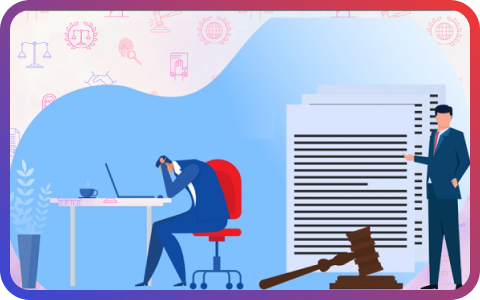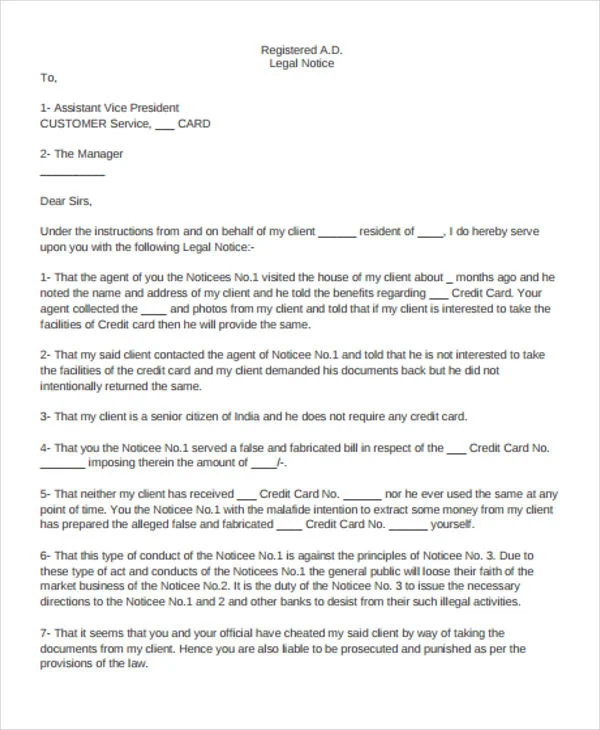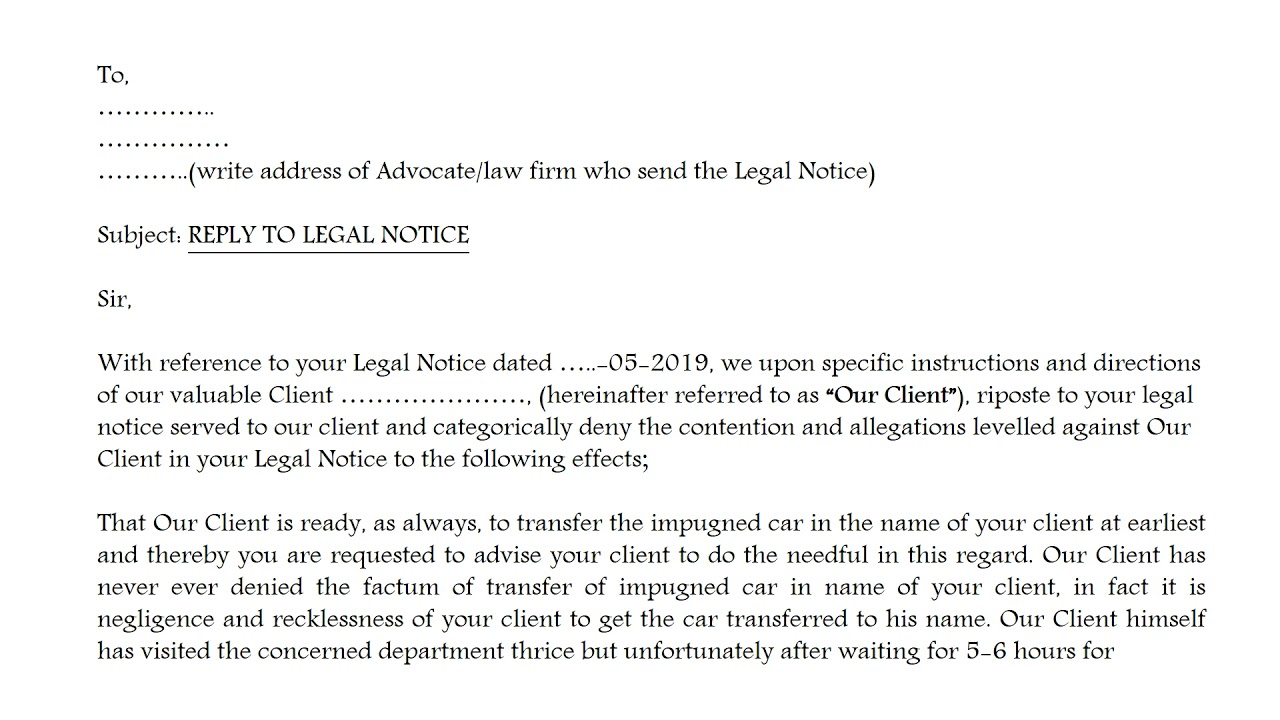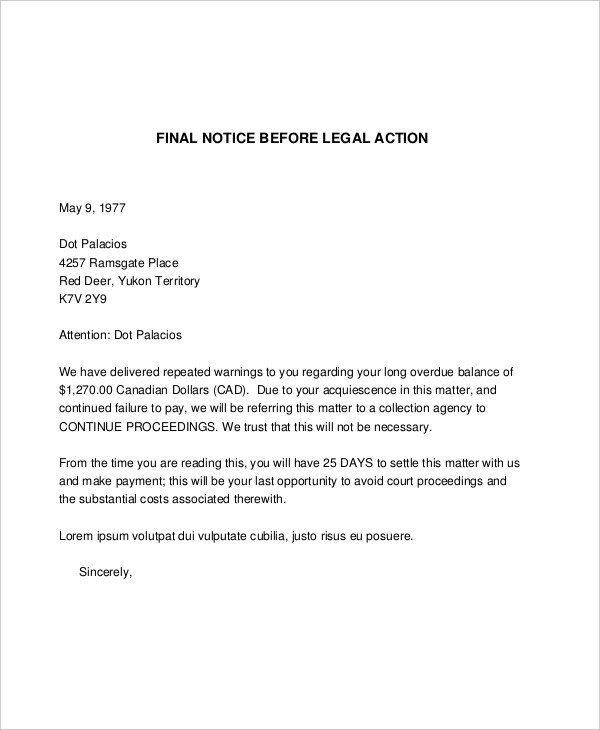A legal notice could be said to be the first step of initiating a court case or as the last step to sort out an issue amongst the parties in an amicable manner.
A legal notice could be understood as a formal way of communicating one’s demands or intentions in order to resolve disputes and prevent legal issues from further escalating. A precisely drafted and timely served notice can have a significant impact on any negotiation, settlement or litigation process.
The primary objective behind sending a legal notice is to inform the concerned parties about your demands or grievances for a particular issue, provide them with an opportunity to rectify or address it within a set timeframe, clarify the legal standpoint, as well as pave path for an common resolution or settlement. In some other cases, a notice can also warn the recipients about the potential legal action in case the demands are not met with.
Legal Notice- Definition
A legal notice, generally referred to as a lawyer's notice, could be understood as a formal intimation sent by one party to another about a legal dispute or grievance. It shall generally demand resolution, compliance, or communication ...Read More
Legal Notice- Definition
A legal notice, generally referred to as a lawyer's notice, could be understood as a formal intimation sent by one party to another about a legal dispute or grievance. It shall generally demand resolution, compliance, or communication within a fixed frame of time. The notice will serve as a warning regarding the consequences in case a timely response is not received.
Purpose
The key purpose for sending a legal notice is:
Formally informing the concerned parties about the grievances, disputes, or demands.
Seeking some specific remedy, action, or resolution within a deadline mentioned in the legal notice.
Clarifying your legal standpoint about the legal issue.
Preparing a proper record about explaining the grievance through proper communication.
Paving path for a settlement or negotiation process in order to avoid legal proceedings.
Notifying the recipient of the notice about the intention of initiating legal action in case the demands made are met with.
To summarise, a legal notice is sent to inform about the disputes, seek timely resolutions, as document records and issue a deadline before taking the matter to the courts.
Steps Before Drafting a Legal Notice
Before drafting a legal notice, one must take certain preliminary steps.
Consultation
One must consult a legal practitioner or lawyer about his or her dispute. They may offer guidance on relevant laws, clauses or legal provisions which shall be applicable to your case. This consultation would set the legal basis for the contents of your notice as well as for the court case, in case you wish to initiate legal proceedings at a later stage.
Gathering Relevant Information
One would have to assemble related documents, records, contracts, correspondence, invoices and evidence for the grievance mentioned in the notice.
Important dates, incidents, conversations and events in chronological order must be noted down.
Information which recipients need to identify the issue, such as account numbers, policy numbers, registration numbers, etc have to be gathered in advance.
The details so prepared would help you to accurately describe the sequence of events in the notice.
Key Elements of a Legal Notice-
A legal notice follows a standard structure and elements. Mentioned below are some of the most important components which your notice must include:
Header
It contains the details and the date of the notice. It shall include information like:
Full name and address of the senderf
Date of issuing the legal notice
Information of the Addressee
The name and address details of the individual, company or entity to whom such notice is addressed to. It has to be made sure that these details are accurate.
Subject Line
It would include a precise subject line which summarises the purpose of the notice. For instance- ‘Notice regarding an outstanding payment’
Reference Numbers
In case the notice is part of an ongoing correspondence, relevant reference numbers or details of previous notices sent must be mentioned as well.
Facts
The events related to the grievance or dispute based on records and evidence gathered must be mentioned in a chronological order. One must adhere to the factual information and avoid mentioning the opinions or emotions.
Legal Provisions
Relevant legal provisions, clauses, statutes, acts or laws as applicable to the case must be mentioned as well. The lawyer appointed may advise on this.
Reliefs Sought
The specific actions or resolutions sought from the recipient must be clearly mentioned in the notice as well. Some examples are:
Payment or refund of a certain amount
To complete the contracted work
Return of an unlawfully occupied property
Apology and retraction of the defamatory statements made
Time Limit
The timeframe within which the sender expects the recipient to respond to the notice or comply with the demands has to be specifically mentioned in the notice as well. Generally a period of 15 days to 30 days is provided.
Declaration
A statement explaining that failing to meet with the demands within the set timeframe would compel you to take appropriate legal action without any further notice has to be included as well.
Signature
The notice would have to be closed with the signature along with the name and address of the sender. It certifies the authenticity of the notice.
Review and Proofreading
It is important to thoroughly review and proofread the legal notice before sending it out. Mentioned below are some of the tips for the same-
Check any Errors
One must look for any spelling, grammar or punctuation mistake. All the factual details such as dates, names, designations or addresses are to be checked completely.
Ensure Consistency
It must be confirmed that the references to laws, clauses, contracts or previous notices are consistent throughout the notice.
Professional Review
It is advised to have a lawyer review the notice so as to validate that the legal basis, if it is accurate and the demands made in the notice are reasonable.
Serving the Notice
After the notice is ready, it has to be “served” or delivered properly to the concerned parties in a legally appropriate manner.
Choose the Right Method
To ensure the legal validity, the notice would have to be sent via a registered post, courier, bailiff or in person. In urgency, a follow up with an email notice could be done. These digital copies and delivery receipts must be kept in a safe place for further use.
Document Everything
All records of all the correspondences and attachments should be maintained properly. All delivery receipts acknowledging that the recipients have been notified must be kept in a precise manner.
After Sending the Notice
After a notice has been delivered, one must be ready with following steps:
The recipients should be allowed the set timeframe to reply to the notice as per the specified deadline. Maintaining a detailed record of all incoming responses or communications is important.
It should be mentioned that one must be prepared with next steps whether the outcome is amicable settlement amongst the parties, refusal to comply with the conditions of the legal notice, partial resolution, contradictory responses to the notice or no response at all. Options such as alternative dispute resolution mechanisms, further negotiations, or moving forward with the litigation process should be kept in mind.
It is advised that you stay in touch with your legal advisor and keep them updated on the incoming responses from the other party. It is important to seek expert guidance on strategizing your next moves.
Conclusion
Drafting a detailed and legally sound notice is important in order to set the right tone for resolution of disputes outside the court and could help set tone for your case in case you wish to initiate legal proceedings. With a formal structure and a clear set of elements, the notice informs the concerned parties about grievances suffered by the sender, provides reasonable time for response, and creates records of correspondence. In short, a legal notice could be said to be the first step of initiating a court case or as the last step to sort out an issue amongst the parties in an amicable manner.
Why Sharks of Law ?
Single Platform- Sharks of Law offers you a single platform where affordable and easily accessible legal services are provided for all kinds of legal issues.
Expert advice- A clients need expert guidance and advice for issues troubling them. Sharks of law offers experienced advocates who provide best guidance for proper procedure required.
Specialised advice- We offer you required guidance and advice for your legal issues.
Highly qualified advocates- Sharks of Law offers you a team of brightest and most driven lawyers who have years long experience in their field.
Easily accessible legal services- Sharks of Law believes that legal assistance should be easily accessible as one may need it at any time of the day, hence you may contact us through any medium you are comfortable with.
Consult with experienced Lawyers across expert areas











Take a look at the glowing reviews and success stories from some of our happy customers to see how (CompanyName) can help your business achieve its goals.